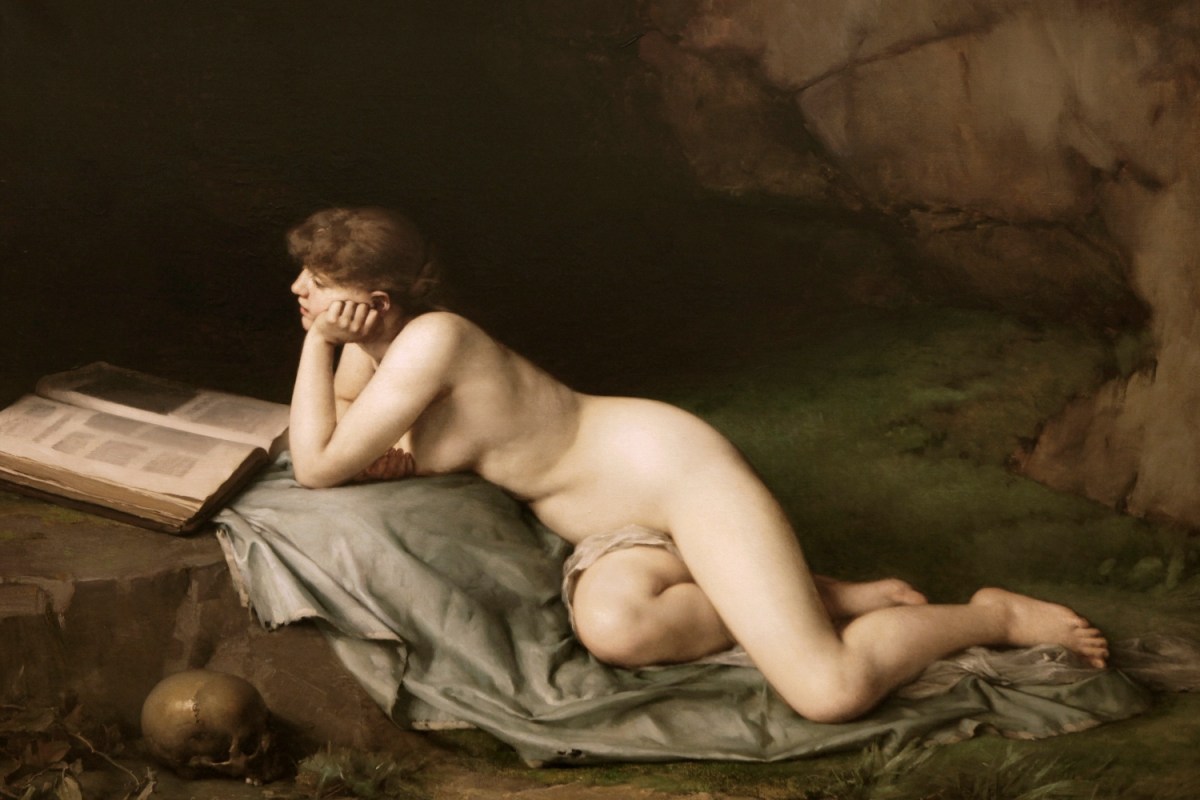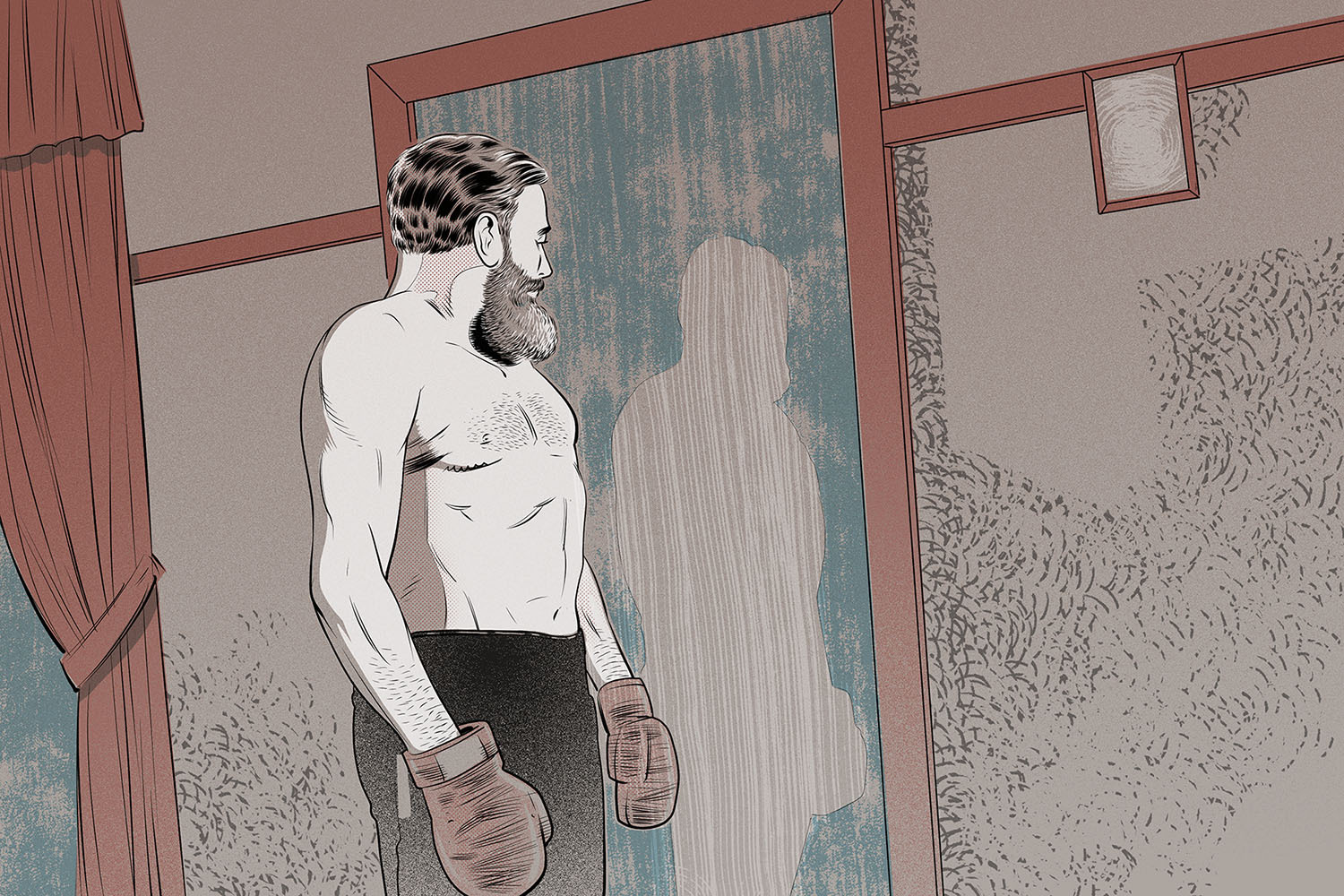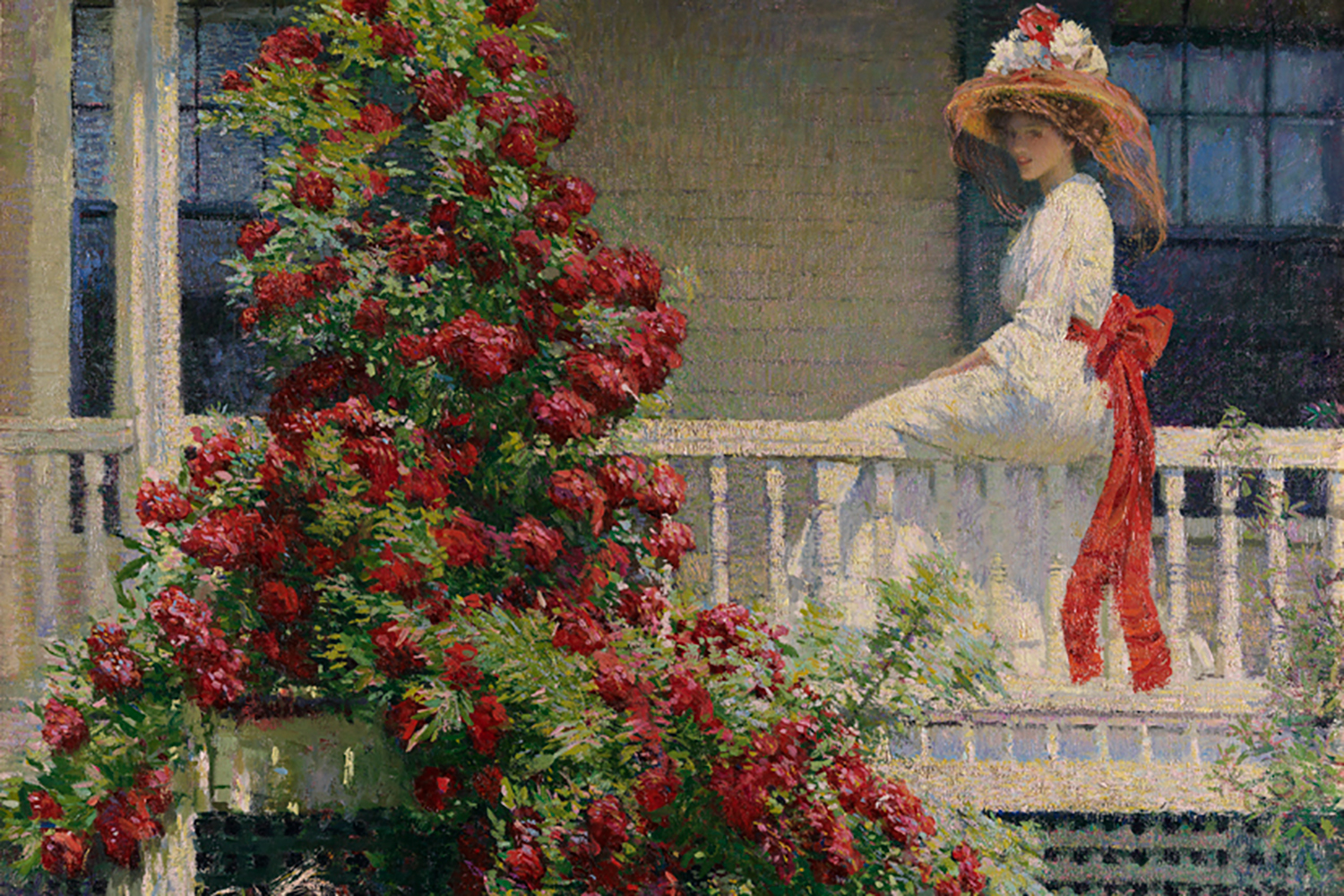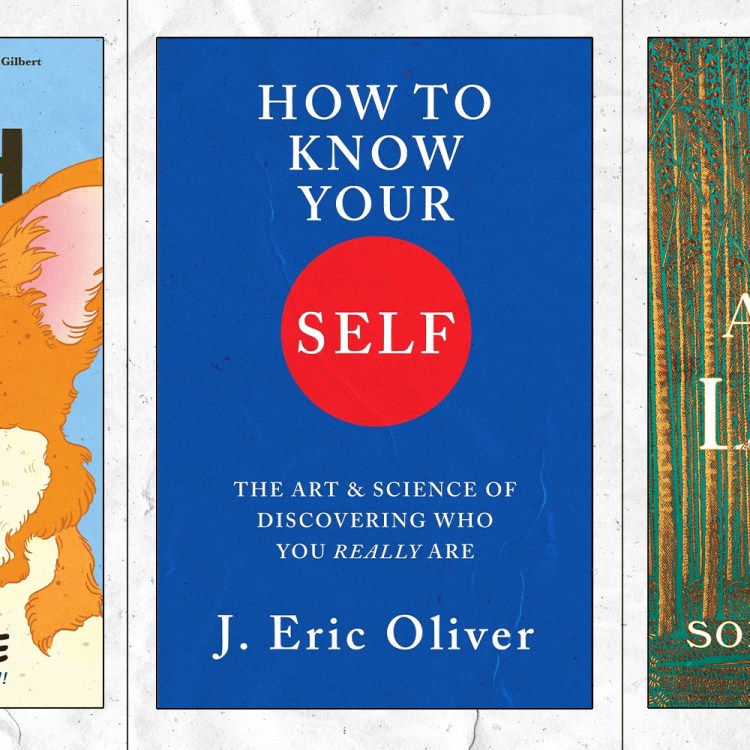Like many children who grow up to go $100,000 in debt for a degree in English literature, I was a precocious reader — and I was super annoying about it. While other kids my age were priding themselves on finishing the Harry Potter series or lusting over Twilight, I spent middle school devouring literary classics, and like the know-it-all little shit that I was, I made damn sure everyone knew it.
What I didn’t let on, however, was that this catalogue of supposedly boring, overwrought literature penned by sexually repressed authors beholden to rigid mores of yore was actually a trove of sexually explicit — or at least suggestive — content. After wisely figuring out that while parents may try to censor their children’s TV or internet consumption, no one was going to stop their precocious child from reading at a college level, I devoted my full attention to seeking out the most scandalous novels classic literature had to offer.
To be fair, it didn’t take much to make a book shockingly (and punishably) risqué in those days. Many of the most “obscene” novels of yore, particularly those of the 19th century, simply involved a young woman having sex outside of marriage and getting punished for it by God, society and/or the universe. (See: The Scarlet Letter, Tess of the D’Urbervilles, Madame Bovary, Adam Bede, etc.) Any sex that takes place is usually only alluded to by a character’s pregnancy (that’s her first punishment from the universe). If described at all, it’s often heavily veiled in flowery metaphors that a slightly distracted reader might overlook entirely.
Still, a number of history’s literary greats did manage to slip some more explicit sex scenes into their masterpieces. Most of them paid for it, of course, leaving their work tied up in sometimes decades-long legal battles over obscenity charges. Fortunately, most of their novels managed to survive generations of censorship and are available today in all their erotic glory to be read, or ignored, by high school English students. Here’s the good stuff you all were missing over on Sparknotes.
Lady Chatterley’s Lover, D.H. Lawrence (1928)
To write an article about sex scenes in classic literature and not mention Lady Chatterley’s Lover would probably be grounds for having my English degree revoked. D.H. Lawrence’s 1928 masterpiece is easily one of the most infamous novels of the 20th century, if not literary history in its entirety, filled with graphic depictions of sex that left the book tied up in censorship trials for decades. Yes, the novel also explores themes of class, nature and the growing threat of industrialism to the beauty of the natural world, but it’s obviously best known for its heavy use of four-letter words and detailed, exquisitely written descriptions of sex and pleasure, like this one:
He too had bared the front part of his body and she felt his naked flesh against her as he came into her. For a moment he was still inside her, turgid there and quivering. Then as he began to move, in the sudden helpless orgasm, there awoke in her new strange thrills rippling inside her. Rippling, rippling, rippling, like a flapping overlapping of soft flames, soft as feathers, running to points of brilliance, exquisite, exquisite and melting her all molten inside. It was like bells rippling up and up to a culmination. She lay unconscious of the wild little cries she uttered at the last.
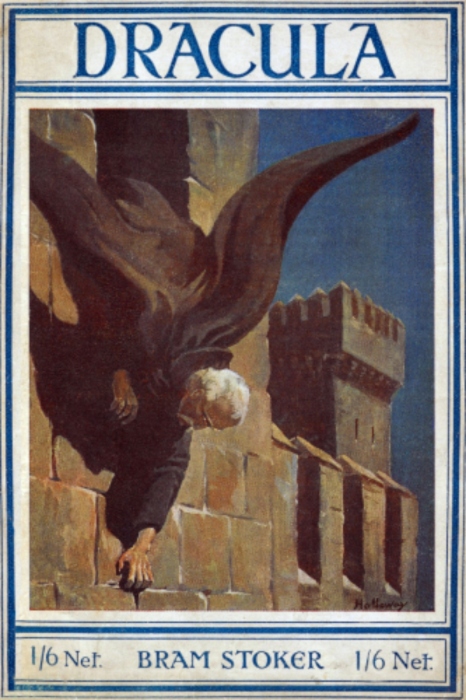
Dracula, Bram Stoker (1897)
Yes, vampires were a sex thing well before Twilight. Bram Stoker’s Dracula, the 1897 novel that gave birth to over a century’s worth of movies, Halloween costumes and children’s cereals, is all about sex, death and blood. Surprisingly explicit for Victorian literature, the novel doesn’t skimp on the gory details.
The girl went on her knees, and bent over me, simply gloating. There was a deliberate voluptuousness which was both thrilling and repulsive, and as she arched her neck she actually licked her lips like an animal, till I could see in the moonlight the moisture shining on the scarlet lips and on the red tongue as it lapped the white sharp teeth. Lower and lower went her head as the lips went below the range of my mouth and chin and seemed to fasten on my throat. Then she paused, and I could hear the churning sound of her tongue as it licked her teeth and lips, and I could feel the hot breath on my neck. Then the skin of my throat began to tingle as one’s flesh does when the hand that is to tickle it approaches nearer, nearer. I could feel the soft, shivering touch of the lips on the super sensitive skin of my throat, and the hard dents of two sharp teeth, just touching and pausing there. I closed my eyes in languorous ecstasy and waited, waited with beating heart.
Fanny Hill, John Cleland (1746)
While the rigid mores of the 19th century did put a damper on sex in literature, things were a lot more lax in the previous century. The novel was in its infancy (while what counts as the “first novel” is disputed, its rise in the English language is usually traced to the early 18th century) and was already looked down upon by the literary elites of the day, who favored poetry. This gave early novelists a lot more room to play with explicit content without ruffling too many feathers. Still, Fanny Hill, John Cleland’s 1746 “memoir of a woman of pleasure” is exactly what it claims to be, and has been no stranger to book banning and public outrage since it first titillated readers nearly 300 years ago.
My breasts, if it is not too bold a figure to call so two hard, firm, rising hillocks, that just began to shew themselves, or signify anything to the touch, employed and amused her hands awhile, till, slipping down lower, over a smooth track, she could just feel the soft silky down that had but a few months before put forth and garnished the mount-pleasant of those parts, and promised to spread a grateful shelter over the sweet seat of the most exquisite sensation, and which had been, till that instant, the seat of the most insensible innocence. Her fingers played and strove to twine in the young tendrils of that moss, which nature has contrived at once for use and ornament.
Tropic of Cancer, Henry Miller (1934)
Another novel that was banned in the United States upon its publication and got tied up in obscenity trials in the ’60s, Henry Miller’s Tropic of Cancer is regarded as one of the most important and erotically charged works of the 20th century, one that’s often credited with ushering in a new era of free speech in literature.
O Tania, where now is that warm cunt of yours, those fat, heavy garters, those soft, bulging thighs? There is a bone in my prick six inches long. I will ream out every wrinkle in your cunt, Tania, big with seed. I will send you home to your Sylvester with an ache in your belly and your womb turned inside out. Your Sylvester! Yes, he knows how to build a fire, but I know how to inflame a cunt.
(Personally, I don’t think “inflaming” vaginas should really be a goal any men have in the bedroom. But still, pretty steamy stuff, no?)
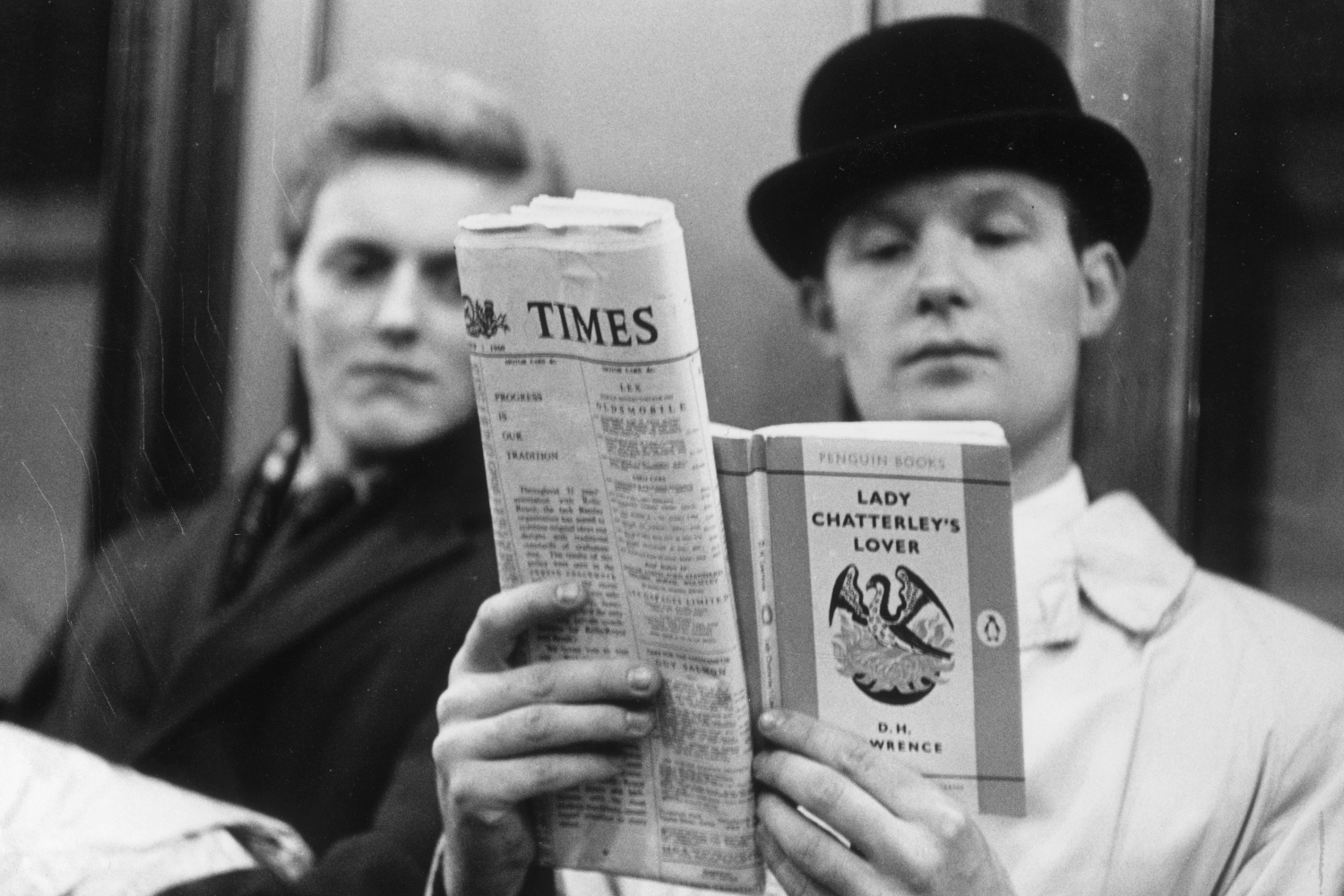
Lady Chatterley (Again)
In my opinion, Lady Chatterley’s Lover is the sexiest sex book in the classic literature canon, filled with so many detailed sex scenes it’s impossible to pick just one.
She lay quite still, in a sort of sleep, in a sort of dream. Then she quivered as she felt his hand groping softly, yet with queer thwarted clumsiness, among her clothing. Yet the hand knew, too, how to unclothe her where it wanted. He drew down the thin silk sheath, slowly, carefully, right down and over her feet. Then with a quiver of exquisite pleasure he touched the warm soft body, and touched her navel for a moment in a kiss. And he had to come in to her at once, to enter the peace on earth of her soft, quiescent body. It was the moment of pure peace for him, the entry into the body of the woman.
She lay still, in a kind of sleep, always in a kind of sleep. The activity, the orgasm was his, all his; she could strive for herself no more. Even the tightness of his arms round her, even the intense movement of his body, and the springing of his seed in her, was a kind of sleep, from which she did not begin to rouse till he had finished and lay softly panting against her breast.
The Decameron, Giovanni Boccaccio (c. 1350)
Again, the Victorian era has given classic literature kind of bad rap in terms of sex appeal. It’s not all Charles Dickens and starving orphans. There were several centuries worth of classic literature well before Mr. Dickens and his contemporaries ushered in the prolific era of literary greatness with which more casual readers today might be most familiar, and a lot of it was pretty horny. In the Middle Ages, especially, things were pretty raunchy. Ever heard of The Canterbury Tales? It’s basically all sex jokes and toilet humor. I haven’t included many excerpt from this time period in this article, in part because most literature from the time was either not in English or written in an early form of the language that is virtually unintelligible to modern English speakers, but also because I am not that interested in medieval literature and this is my article. Still, I would be remiss to ignore this era of literary horn entirely, so here’s a little story about nun sex from The Decameron, which was written in 14th-century Italy and first published in English in 1886.
Now it so befell that after a hard day’s work he was taking a little rest, when two young nuns, who were walking in the garden, approached the spot where he lay, and stopped to look at him, while he pretended to be asleep. And so the bolder of the two said to the other: ‘If I thought thou wouldst keep the secret, I would tell thee what I have sometimes meditated, and which thou perhaps mightest also find agreeable’…. So she took him by the hand with a blandishing air, to which he replied with some clownish grins. And then she led him into the hut, where he needed no pressing to do what she desired of him. Which done, she changed places with the other, as loyal comradeship required; and Masetto, still keeping up the pretence of simplicity, did their pleasure.
The Garden of Eden, Ernest Hemingway (1986, posthumous)
Ernest Hemingway was no stranger to veiled sexual references in his modernist masterpieces (a Farewell to Arms was banned in Boston in 1929 due to a scene that implies woman-on-top sex, which was considered a particularly obscene position, very unladylike). But it wasn’t until his last, unfinished novel, The Garden of Eden, was published posthumously in 1986 that the world learned the kind of kinky shit Hemingway was capable of. A gender-bending tale of sexual exploration between a young married couple honeymooning in the south of France, The Garden of Eden features depictions of sexual role-reversal and gender non-conformity, including the kind of sex acts one apparently wouldn’t be able to do in Spain — “such a formal country.”
He had shut his eyes and he could feel the long light weight of her on him and her breasts pressing against him and her lips on his. He lay there and felt something and then her hand holding him and searching lower and he helped with his hands and then lay back in the dark and did not think at all and only felt the weight and strangeness inside and she said, “Now you can’t tell who is who can you?”
Fanny Hill (Again)
I don’t have to justify anything to you, but Fanny Hill gets two mentions here because it’s earned it. Unlike many books on here, which are novels that just so happen to include some sex, Fanny Hill is literally a book about sex. Moreover, it’s a book about women’s pleasure, something that remains relatively rare even today. Still, it’s a book about women’s pleasure written by a man, which means of course there are plenty of dicks involved, like this one:
…I saw, with wonder and surprise, what? not the play-thing of a boy, not the weapon of a man, but a maypole of so enormous a standard, that had proportions been observ’d, it must have belong’d to a young giant. Its prodigious size made me shrink again; yet I could not, without pleasure, behold, and even ventur’d to feel, such a length, such a breadth of animated ivory! perfectly well turn’d and fashion’d, the proud stiffness of which distended its skin, whose smooth polish and velvet softness might vie with that of the most delicate of our sex, and whose exquisite whiteness was not a little set off by a sprout of black curling hair round the root…
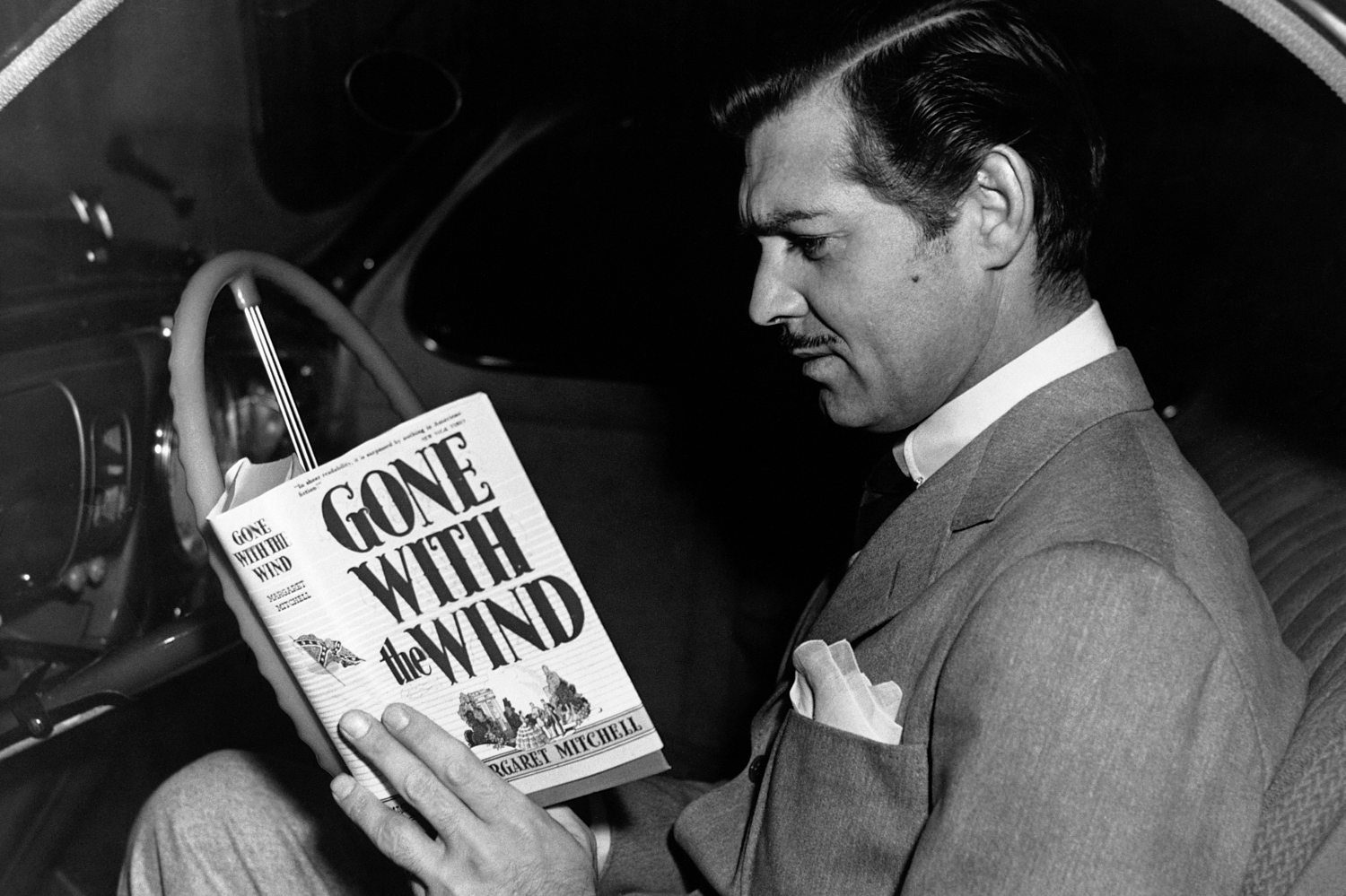
Gone With the Wind, Margaret Mitchell (1936)
These days, Gone With the Wind is mostly controversial for things that have little to do with sex — namely, racism. Back in the day, however, Margaret Mitchell’s 1936 ode to the Old South sparked controversy thanks to a little (not necessarily consensual) sex scene between Scarlett and Rhett (later immortalized on screen by Viven Leigh and Clark Gable).
He was muttering things she did not hear, his lips were evoking feelings never felt before. She was darkness and he was darkness and there had never been anything before this time, only darkness and his lips upon her. She tried to speak and his mouth was over hers again. Suddenly she had a wild thrill such as she had never known; joy, fear, madness, excitement, surrender to arms that were too strong, lips too bruising, fate that moved too fast. For the first time in her life she had met someone, something stronger than she, someone she could neither bully nor break, someone who was bullying and breaking her. Somehow, her arms were around his neck and her lips trembling beneath his and they were going up, up into the darkness again, a darkness that was soft and swirling and all enveloping.
Ulysses, James Joyce (1920)
I’ll be honest, I only actually read like two chapters of Ulysses when I was supposed to read it in college, and they were the sex ones. I’m told there are a couple of sex scenes throughout the book that are responsible for its controversial reputation, but there are only two that I remember. There’s the one where our intentionally pathetic Odysseus stand-in, Leopold Bloom, pulls a Louis C.K. and jacks off in public to a hot girl he sees on the beach, which, yikes. And then there’s the one where his wife, Molly Bloom, closes out the entire anvil of a novel with her own orgasm, which is much hotter.
For those who have had the privilege of never reading James Joyce, most of his work is written in extremely experimental, borderline unintelligible stream-of-consciousness prose. This means that most of it is up to interpretation. (Less up to interpretation are the stunningly raunchy love letters Joyce once penned to his wife Nora.) But while one could argue that this final chapter is not, in fact, about Bloom’s wife pleasuring herself, that tends to be the general consensus among most readers and literary scholars. Because everything Joyce writes is tangled up in this incoherent web of presumably genius prose (sorry, not a big Joyce fan here), it’s admittedly hard to tell exactly what’s going on here, and it’s certainly nowhere near as explicit as the sex scenes D.H. Lawrence was serving up at the time. Still, Molly’s stream-of-consciousness musings follow a certain cadence that just feels sexual, one that ends in a paean of yes-es that seems pretty clear to me. And despite the otherwise unintelligible nature, it’s somehow surprisingly hot. With that, I leave you — like Joyce himself — with Molly Bloom’s orgasm.
…yes and those handsome Moors all in white and turbans like kings asking you to sit down in their little bit of a shop and Ronda with the old windows of the posadas glancing eyes a lattice hid for her lover to kiss the iron and the wineshops half open at night and the castanets and the night we missed the boat at Algeciras the watchman going about serene with his lamp and O that awful deepdown torrent O and the sea the sea crimson sometimes like fire and the glorious sunsets and the figtrees in the Alameda gardens yes and all the queer little streets and pink and blue and yellow houses and the rosegardens and the jessamine and geraniums and cactuses and Gibraltar as a girl where I was a Flower of the mountain yes when I put the rose in my hair like the Andalusian girls used or shall I wear a red yes and how he kissed me under the Moorish wall and I thought well as well him as another and then I asked him with my eyes to ask again yes and then he asked me would I yes to say yes my mountain flower and first I put my arms around him yes and drew him down to me so he could feel my breasts all perfume yes and his heart was going like mad and yes I said yes I will Yes.
The Charge will help you move better, think clearer and stay in the game longer. Subscribe to our wellness newsletter today.
